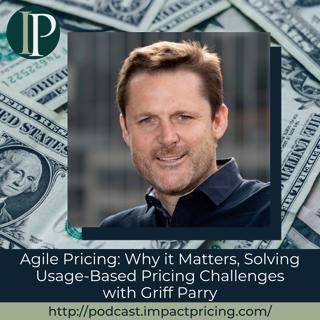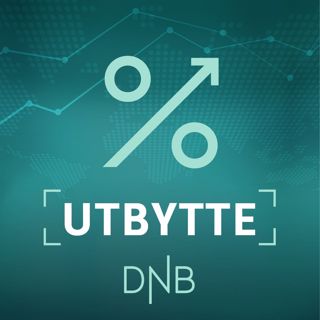
Blogcast: Nobody Cares About Your Product
This is an Impact Pricing Blog published on April 20, 2023, turned into an audio podcast so you can listen on the go. Read Full Article Here: https://impactpricing.com/blog/nobody-cares-about-your-product/ If you have any feedback, definitely send it. You can reach us at mark@impactpricing.com. Now, go make an impact. Connect with Mark Stiving: Email: mark@impactpricing.com LinkedIn: https://www.linkedin.com/in/stiving/
26 Mai 20234min

Pricing Table Topics: 5 of Hearts – Blame Costs When You Increase Prices
This one is the 5 of Hearts from the Selling Value card deck. It's true, customers hate price increases. Heck, I get an annual price increase from Intuit for my QuickBooks, and I hate it. But there's nothing I can do about it. I just have to sit around and stew about the fact that I really despise that Intuit raises my price every year. However, when we blame costs, then people hate us a little bit less. So, we know as pricing people, as salespeople, we know that our prices really have nothing to do with our costs. But our customers don't really know that, and our customers believe the cost drive pricing. So therefore, if we're going to raise prices, the only real reason customers accept is that our costs went up. Imagine if Intuit sent me that email every year, and instead of it said, 'Hey, we're raising your price by $8, $10,' whatever it happens to be. Instead they say, 'Hey, our costs have gone up this year. We need to pass that on. We're going to increase your price by $10.' sure, I still dislike it. But I dislike it a little less. It's like they have a reason other than, 'Hey, I want you to pay more so that I can make more money.' So, think about blaming costs when you increase prices. We hope you enjoyed this example of Pricing Table Topics. What you just heard was done without a script. If you want to get better at speaking about pricing and value, grab a deck of our cards, pick a card, read the saying, then talk for one to two minutes about what that card says. You'll become a better speaker and expert. If you have any questions or feedback, please email me, mark@impactpricing.com. Now, go make an impact. Connect with Mark Stiving: Email: mark@impactpricing.com LinkedIn: https://www.linkedin.com/in/stiving/
24 Mai 20232min

Interdepartmental Cooperation as Key to Developing an Unbeatable Pricing Strategy with Darlene Nordstrom
Darlene Nordstrom is an accomplished pricing professional with experience in developing and implementing worldwide software pricing and licensing strategies spanning traditional on premise, cloud and software as a service (SaaS) offerings. Broad financial knowledge including revenue recognition, standalone selling price, return on investment, profit and loss statements and various analyses such as profitability, variance, impact, market and competitive analyses. In this episode, Darlene highlights the crucial role of interdepartmental collaboration in developing a robust pricing strategy. Additionally, she stresses the importance of having a designated pricing specialist to oversee the entire process. Why you have to check out today’s podcast: Find out why interdepartmental cooperation makes a successful pricing strategy What added value does a pricing person bring to the table with departmental integration notwithstanding Learn why you should be discerning when creating short-term and long-term pricing efforts "Cross-functional collaboration - to me that is key. What's been successful in my 15 plus years of doing pricing is having that cross-functional collaboration where everyone feels like they have a voice." - Darlene Nordstrom Topics Covered 01:30 - What prompted her to pursue a career in pricing? 02:15 - Pricing as a team effort and a collaborative endeavor 04:49 - How does a collaborative effort in pricing look like in IBM? 05:29 - Discussing the process in reaching a pricing decision 07:18 - Which pricing decisions need this complicated process of decision making? 08:52 - Why the need for a pricing person when there is already a collaboration with other departments? 11:50 - What added value does a pricing team bring to a corporation? 12:52 - Important considerations to think about in terms of creating short and long-term efforts in pricing 15:17 - Partnering with financial folks to do the analytical part of interpreting data and KPIs 17:14 - IBM as a premium price leader doing the competitor-based pricing 18:57 - Talking about the differential value in a competitor-based pricing 20:57 - How hard was it changing a pricing metric for a product and when do you consider changing it? 22:58 - Darlene's pricing advice that could impact one's business Key Takeaways: "You don't set your price once and done, you just keep reiterating it. And the pricing team is responsible for providing those meaningful insights." - Darlene Nordstrom "What you shouldn't do is make short-term decisions that will impact your long-term goals. Being short-sighted and reacting, you don't want to end up in a price war and react because a competitor did something." - Darlene Nordstrom "You always have to be thinking in terms of that end goal in mind and work backwards, and maybe there are some iterative steps that you could take to get to that end goal. I'd be careful about making some short-term decisions that impact your long-term goals.” - Darlene Nordstrom People / Resources Mentioned: IBM: https://www.ibm.com/ Connect with Darlene Nordstrom: LinkedIn: https://www.linkedin.com/in/darlene-nordstrom-96ab4220/ Connect with Mark Stiving: LinkedIn: https://www.linkedin.com/in/stiving/ Email: mark@impactpricing.com
22 Mai 202324min

Blogcast: Lessons from a Cute Story
This is an Impact Pricing Blog published on April 13, 2023, turned into an audio podcast so you can listen on the go. Read Full Article Here: https://impactpricing.com/blog/lessons-from-a-cute-story/ If you have any feedback, definitely send it. You can reach us at mark@impactpricing.com. Now, go make an impact. Connect with Mark Stiving: Email: mark@impactpricing.com LinkedIn: https://www.linkedin.com/in/stiving/
19 Mai 20233min

Pricing Table Topics: 5 of Spades – Value Tables
This one is the 5 of Spades from the Selling Value card deck. A value table consists of four columns: the solution, the problem, the result, and the value, typically in dollars. And when we do this, we think of creating the information, or the data in each cell for a typical customer. But we would never walk into a customer and say, 'You should expect to make a million dollars by buying this product.' Or we would never walk into a customer and say, 'We would expect you to have 3% more productivity if you buy our product.' Instead, when we think through all of the columns in a value table, and where additional profit comes from, and where additional productivity or reduced turnover, or whatever other effects we're going to have for our customers, then all we've done is say, 'This is a possible scenario.' But if we understand what those are, then when we go in and start having conversations with our buyers, and we say, 'What problems are you trying to solve?' Or, 'What results might you be looking for?' We already know how to take those problems, turn them into results. Those results turn them into profit dollars to the customer. So, I think of a value table more as a roadmap, as a conversation starter. As a way to say, 'Here's where I think the dialogue may be going.' But it certainly isn't the sales pitch we walk in with. We hope you enjoyed this example of Pricing Table Topics. What you just heard was done without a script. If you want to get better at speaking about pricing and value, grab a deck of our cards, pick a card, read the saying, then talk for one to two minutes about what that card says. You'll become a better speaker and expert. If you have any questions or feedback, please email me, mark@impactpricing.com. Now, go make an impact. Connect with Mark Stiving: Email: mark@impactpricing.com LinkedIn: https://www.linkedin.com/in/stiving/
17 Mai 20232min

Association Pricing: Leveraging Value as the Driving Force for Pricing Success with Michael Tatonetti
Michael Tatonetti is the Founder and CEO of Pricing for Associations. He is also a Pricing and Value Speaker and Consultant and a Certified Association Executive as well as a Certified Pricing Professional. In this episode, Michael discusses the importance of aligning pricing and value with the mission of associations and non-profit organizations. He emphasizes that value should be the central factor in creating a pricing strategy, as it resonates more with members and strengthens their connection to the organization. Why you have to check out today’s podcast: Discover the three factors that distinguish associations from traditional subscriptions and find out their similarities in some aspects Find out how to price an association and why these two components of value and price tie in together to create the best pricing Learn how associations communicate better value in their pricing and the formula you can use to best convey your pricing "Focus on the value. Always put the value before the price." - Michael Tatonetti Topics Covered: 01:01 - How he started a career in Pricing 02:36 - What differentiates non-profit associations from subscription businesses? 03:59 - How does competition feels different in an association space? 05:37 - Looking at an associations membership bylaws, pricing objectives, their competitive positions in the space 07:16 - Three things that makes an association different from subscription business and what makes them the same with it 10:15 - What to consider when shifting from annual to monthly billing for associations and what he advocates as the biggest thing that differentiates association from subscription 12:32 - Pricing an association and when does he consider competitors when pricing? 15:08 - Questions to ask to come up with the best pricing 17:17 - Using Van Westendorp to help in data analysis for pricing [and the number of samples needed for this tool] 18:17 - Michael letting Mark share his own idea of the right number of responses needed for Van Westendorp data analysis 20:49 - Relying on value and not on cost when communicating pricing 24:38 - Michael's best pricing advice that could impact any business Key Takeaways: "Most subscriptions, not all, of course, run on like a monthly basis. Of course you can do annual, but most of them, you think in monthly terms where most associations are billing annually." - Michael Tatonetti "Most subscriptions for profit are able to just auto-bill where some associations, depending on state, cannot auto-bill, they can opt in, but for some they cannot." - Michael Tatonetti "Associations are typically divided into one of two categories, either organizational or individual. They're typically called trade or individual, trade is organization. Now, when you have an organization, then yes, typically they're not going to have it on renew." - Michael Tatonetti "I think of traditional subscriptions as an individual, I sign up and then I cancel when I want. Where with associations, there's typically more thought-power that goes into the decision to continue year over year." - Michael Tatonetti "I lean in on value a lot. I typically will not do work with an organization on just price. I typically require that we're doing value and price because most organizations don't change their value too often." - Michael Tatonetti People / Resources Mentioned: Robbie Kellman Baxter: https://impactpricing.com/podcast/ep94-powerful-pricing-insights-from-a-subscription-expert-with-robbie-kellman-baxter/ Van Westendorp: https://en.wikipedia.org/wiki/Van_Westendorp%27s_Price_Sensitivity_Meter Connect with Michael Tatonetti: LinkedIn: https://www.linkedin.com/in/drtatonetti/ Connect with Mark Stiving: LinkedIn: https://www.linkedin.com/in/stiving/ Email: mailto:mark@impactpricing.com
15 Mai 202325min

Blogcast: You Have the Curse of Knowledge
This is an Impact Pricing Blog published on April 6, 2023, turned into an audio podcast so you can listen on the go. Read Full Article Here: https://impactpricing.com/blog/you-have-the-curse-of-knowledge/ [powerpress] If you have any feedback, definitely send it. You can reach us at mark@impactpricing.com. Now, go make an impact. Connect with Mark Stiving: Email: mark@impactpricing.com LinkedIn: https://www.linkedin.com/in/stiving/
12 Mai 20233min

Pricing Table Topics: 6 of Diamonds – Possess Acumen About Your Buyer's Business
This one is the 6 of Diamonds from the Selling Value card deck. If you are having value conversations, you're focusing on, what's the problem the client's trying to solve? What's the result they might expect to achieve? And if that result is quantifiable and we're selling to a company, then almost certainly you can turn that quantifiable results into incremental profit to that company. But in order to do that, we have to understand the business of our customers. I remember a long, long time ago when I was in sales, we were selling automatic test equipment and we had a device that was more accurate. But in order for the test equipment that was more accurate to have value to the client, we had to show, how does this more accurate tester generate more profit? Well, the answer was, in order for a semiconductor manufacturer to ensure that a part was of a specific speed, they had to take in the accuracy of the test equipment. And so, if a test equipment was less accurate, they would build a bigger guardrail. And if a test equipment was more accurate, they could have a smaller guardrail, which meant more parts would pass the test. And those more parts passing tests were sold at higher prices, meaning they made more profit. The point is, if we don't understand the business of our customers and we don't understand how they're going to make additional profit, then it's really hard for us to help our clients say, here's why this capability generates more profit for you. And when we're able to do that, then clients are much more likely and willing to buy from us. We hope you enjoyed this example of Pricing Table Topics. What you just heard was done without a script. If you want to get better at speaking about pricing and value, grab a deck of our cards, pick a card, and read the saying. Then, talk for one to two minutes about what that card says. You'll become a better speaker and expert. If you have any questions or feedback, please email me, mark@impactpricing.com. Now, go make an impact. Connect with Mark Stiving: Email: mark@impactpricing.com LinkedIn: https://www.linkedin.com/in/stiving/
10 Mai 20232min






















